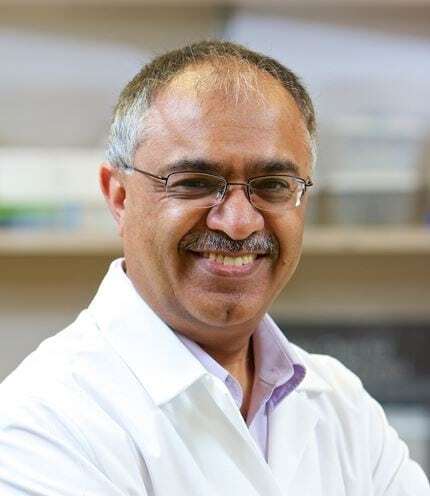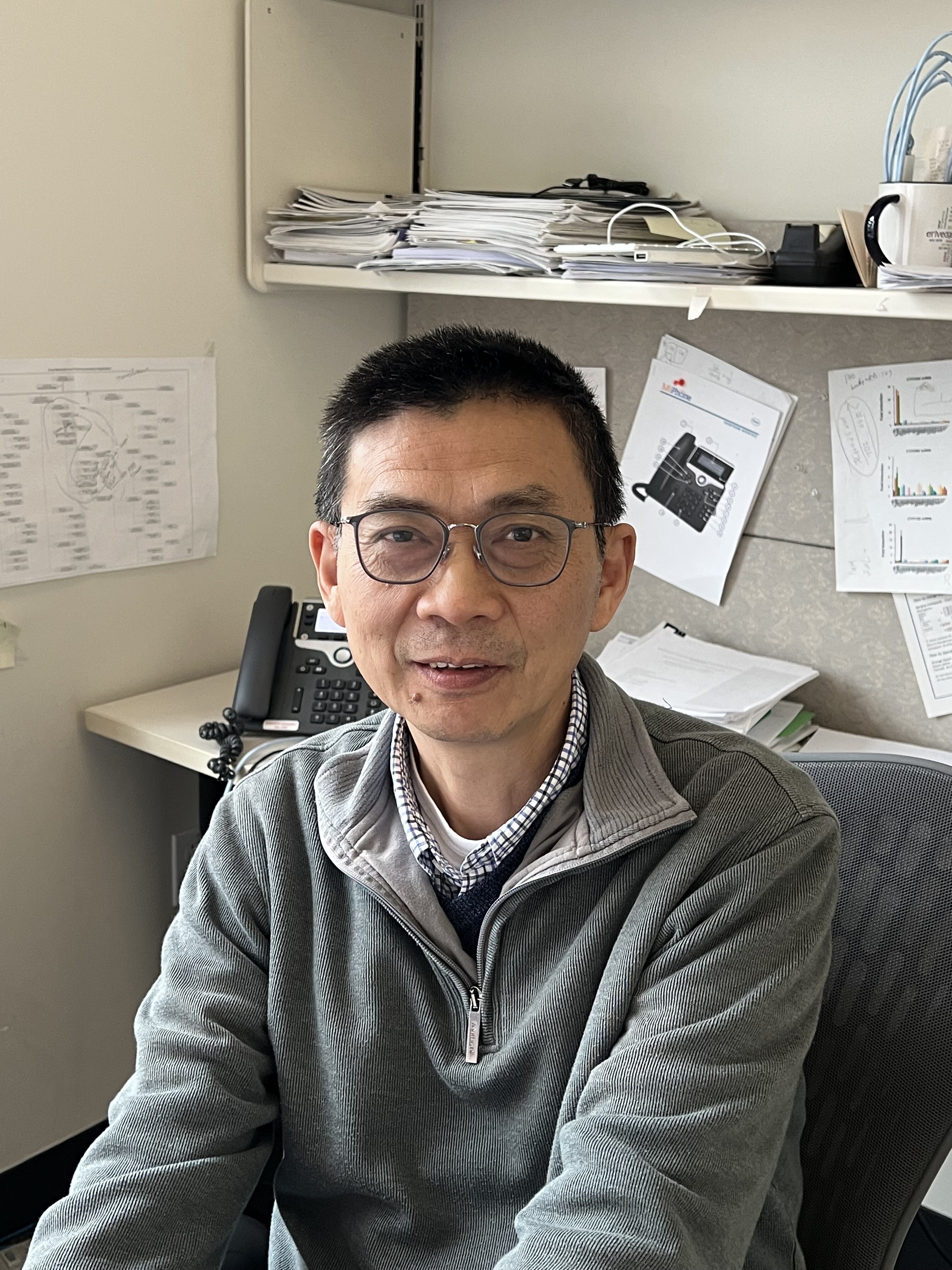
Catalog Advanced Search
-
Contains 3 Component(s)
The resurgence of covalent inhibitors as a viable therapeutic approach continues to expand and positively impact patients, particularly for targets previously considered undruggable. The application of targeted covalent inhibitor (TCI) strategies is broadening the range of druggable targets. Adopting and implementing appropriate computational and experimental paradigms will facilitate the design and selection of clinical candidates throughout the drug discovery and development process. While well-defined steps for the development of targeted covalent drugs are evolving, this presentation will outline a general strategy for the discovery and development of TCIs. Additionally, pharmacokinetic/pharmacodynamic (PK/PD) and efficacy mechanistic models for covalent drugs will be discussed. These mechanistic PK/PD/efficacy models derived from pre-clinical and clinical experience will enhance our understanding of the pharmacokinetic and pharmacodynamic interplay and assist in designing next-generation covalent drugs.
This presentation will outline a general strategy for the discovery and development of TCIs. Additionally, pharmacokinetic/pharmacodynamic (PK/PD) and efficacy mechanistic models for covalent drugs will be discussed. These mechanistic PK/PD/efficacy models derived from pre-clinical and clinical experience will enhance our understanding of the pharmacokinetic and pharmacodynamic interplay and assist in designing next-generation covalent drugs.

Upendra Dahal
Upendra Dahal is currently a Scientific Director in Pharmacokinetic and Drug Metabolism (PKDM) Department at Amgen. He represents PKDM in multi-disciplinary teams from discovery to development, oversees small molecule projects and outsourcing of ADME studies, and supervises scientists and PTRs. Proficient in designing in vitro and in vivo studies to characterize/understand PKDM properties of the drug candidates, provides recommendations to the teams to design better compounds with minimal metabolic and DDI liabilities. Leading the biotransformation group for small molecule drugs, Upendra reviews data, monitors studies, and addresses PKDM challenges to mitigate risks. His role involves preparing as well as reviewing regulatory documents for IND and NDA submissions. Previously worked at Celgene and Pfizer, Upendra boasts diverse research interests, evidenced by a strong track record of peer-reviewed publications across various domains. Upendra received his PhD focusing on enzyme kinetics and drug metabolism from Washington State University under supervision of Prof. Jeff Jones.

Nashid Farhan
Nashid Farhan is a modeling and simulation expert working in the Pharmacokinetic and Drug Metabolism (PKDM) Department at Amgen. His specialization lies in small molecule pharmacokinetics/pharmacodynamics (PK/PD) and physiologically based pharmacokinetic (PBPK) modeling and simulation. As a subject matter expert (SME), he regularly develops models to predict human dose/dosing regimen, assess cardiac safety, and evaluate drug-drug interaction liabilities of small molecule drugs. In addition, Nashid is a Shiny App developer and has created multiple applications for PK/PD model fittings and simulations. Before joining Amgen, Nashid was a post-doctoral associate at the University of Florida's Center for Pharmacometrics and Systems Pharmacology, where he worked both on population PK/PD and PBPK models. He received his PhD in Pharmaceutics from the University of Houston, focusing on pharmacokinetics, drug metabolism, and PK/PD modeling.

Li Di (Moderator)
Dr. Li Di has ~30 years of experience in the pharmaceutical industry including Pfizer, Wyeth, and Syntex. She is currently a DMPK fellow at Recursion Pharmaceuticals. Her research interests include the areas of drug metabolism, pharmacokinetics, PK/PD, drug-drug interactions, absorption, transporters, blood–brain barrier and PBPK modeling and simulation. She has 200 publications including two books and presented over 100 invited lectures. She is a recipient of the Thomas Alva Edison Patent Award, the New Jersey Association for Biomedical Research Outstanding Woman in Science Award, the Wyeth President’s Award, Peer Award for Excellence, Pfizer’s top 14 articles in 2023 and ISSX Distinguished Accomplishments in Drug Discovery and Development of Paxlovid Team Award (2023) and individual award (2024).
-
Register
- Non-member - $49
- Member - Free!
- Student - Free!
- Premier - Free!
- More Information
-
Register
-
Contains 3 Component(s)
Join us for an exciting webinar spotlighting emerging research led by African trainees tackling some of the continent’s most pressing health challenges. This session, with attendees drawn from the recently concluded ISSX Africa workshop, will feature four dynamic presentations exploring complex pharmacokinetics drug-drug interactions (DDI) and modelling in African patients.
Join us for an exciting webinar spotlighting emerging research led by African trainees tackling some of the continent’s most pressing health challenges. This session, with attendees drawn from the recently concluded ISSX Africa workshop, will feature four dynamic presentations exploring complex pharmacokinetics drug-drug interactions (DDI) and modelling in African patients.
Featured Topics Include:
- The Effect of Pregnancy and Breastfeeding on the Population Pharmacokinetics of Levofloxacin in South Africans with Rifampicin-Resistant Tuberculosis
- Population pharmacokinetic analysis of pyrazinamide and isoniazid in plasma and cerebrospinal fluid in adults with HIV-associated tuberculosis meningitis
- Personalised Tacrolimus Dosing in African Kidney Transplantation: Insights from a Single Centre in Kenya
- Darunavir and Rilpivirine Plasma Concentrations with and Without Progestin Implants, and Their Impact on HIV Viral Load in Ugandan Women

Jose M. Calderin
Jose M. Calderin is an early-career scientist in Pharmacometrics, currently pursuing his PhD at the University of Cape Town. Originally from Havana, Cuba, he holds a Bachelor's degree in Pharmaceutical Sciences from the University of Havana. His doctoral research focuses on population PK/PD modelling to optimize treatment strategies for pulmonary and meningeal tuberculosis, integrating preclinical and clinical data.

Shadia Nakalema
Shadia Nakalema is an Internal Medicine Physician and Research Scientist at the Infectious Diseases Institute, Mulago, committed to expanding her expertise in healthcare to address emerging challenges. Shadia has extensive experience working with special populations, including pregnant and breastfeeding women. As part of the Contraceptive Implant Research Consortium for Low-Income Countries, she focuses on building evidence for the safe use of contraceptive implants among women living with HIV. Her primary research interests lie in pharmacokinetics and pharmacogenomics, with a particular focus on drug-drug interactions between antiretroviral drugs (such as efavirenz and nevirapine) and contraceptive implants.
Shadia is also part of the DolPHIN-3 consortium, which focuses on optimizing long-acting injectable antiretroviral therapy for pregnant and postpartum women living with HIV. As part of this, she is pursuing a PhD, examining the drug interactions between standard antiretroviral therapies and hormonal contraceptives. Additionally, she aims to explore implementation science aspects related to the integration of long-acting ART and family planning services for women living with HIV. This research will further contribute to improving treatment strategies and reproductive health options for women living with HIV.
Davies Otieno
Davies Otieno is a first-year PhD Candidate in Makerere University, Infectious Diseases Institute, working under the supervision of Prof. Catriona Waitt. Drawing on a background in Medicine from the University of Nairobi, and an MSc in Clinical Pharmacology from the University of Aberdeen, he developed a keen interest in variability in clinical pharmacokinetics and clinical outcomes. Davies' doctoral research currently focuses on antimicrobial pharmacokinetics in maternal sepsis. Prior to his PhD, Davies completed specialty training in Internal Medicine where he investigated CYP3A4 genotypes using a clinical predictive index in patients taking tacrolimus after kidney transplantation. These findings were presented at the ISSX 2025 African Chapter. He is also interested in open-source tools for pharmacometrics and keen on collaborative initiatives.

Sharon Sawe
My name is Sharon Sawe, and I am originally from Kenya. I have a background in biostatistics and data science, and I am currently pursuing a PhD in Pharmacometrics at the University of Cape Town, in the Department of Medicine, Division of Clinical Pharmacology. My research mostly focuses on the pharmacokinetics and pharmacodynamics of antitubercular drugs in pregnant and breastfeeding women, as well as drug exposure in their infants. I am enthusiastic about the application of artificial intelligence and machine learning in pharmacometrics, and I am passionate about advancing maternal and child health through pharmacometrics.

Mathew Njoroge (Moderator)
Senior Scientist
Holistic Drug Discovery and Development Centre
Mathew Njoroge is a senior scientist at the Holistic Drug Discovery and Development Centre (H3D), University of Cape Town (UCT), where he works as part of a multidisciplinary team to advance preclinical drug discovery projects. His interest in drug discovery was sparked during his undergraduate in Pharmacy at the University of Nairobi and forged during postgraduate studies with Prof. Kelly Chibale's group at UCT, where he graduated with his PhD in 2010.
His postgraduate work, and his career since then have focused on understanding the metabolism and pharmacokinetics of compounds with a view to translating in vitro data to human exposure – efficacy relationships, as part of drug discovery projects in malaria, tuberculosis and antimicrobial resistance. This work, combined with H3Ds mission to build Africa-specific models, has led to research interests in drug metabolism and disposition in the African population – more specifically in considering the impact of pharmacogenetic variability on the pharmacokinetics of drugs in African populations.

Julius O. Enoru (Moderator)
Director (Senior Principal Research Scientist)
AbbVie
Julius O Enoru (Ph.D.) is a Director (Senior Principal Research Scientist) at the Department of Qualitative Translational and ADME Sciences (QTAS), AbbVie Pharmaceutical Research & Development, South San Francisco, CA, USA. He holds a Ph.D. in Molecular Biology from Vrije Universiteit Brussels (VUB), Belgium and completed a Postdoctoral Research Fellowship program at the department of Drug Metabolism and Pharmacokinetics, Wyeth Pharmaceuticals, Pennsylvania. Julius is a subject matter expert in Translational ADME sciences, currently responsible for scientific oversight of pre-FIH in Vitro ADME Sciences functions at the AbbVie South San Francisco, CA site. He has contributed to many INDs, NDAs and responses to regulatory agencies’ inquiries. Julius represents AbbVie on the pharmaceutical industry consortium - International Consortium for Innovation and Quality in Pharmaceutical Development – “Guidelines for development of Targeted Covalent Inhibitors Working Group”.
Julius is passionate about the advancement of xenobiotic research in the African continent and seeks to connect partners to establish collaboration with industry/academic colleagues. He was the co-chair of the 2025 ISSX Africa workshop in Johannesburg, South Africa, and is a member of many international professional organizations. Julius has been a mentor to many students and continues to mentor early career scientists through the ISSX mentorship program.
-
Register
- Non-member - $49
- Member - Free!
- Student - Free!
- Premier - Free!
- More Information
-
Contains 3 Component(s)
Quantitative, Translational, & ADME Sciences (QTAS), Abbvie Inc., North Chicago, IL, USA Abstract: Compounds exhibiting low metabolic clearance are often favored to improve pharmacokinetic profiles and decrease dose. To predict clearance, common experimental techniques include incubations with liver microsomes or cryopreserved hepatocytes in suspension. Hepatocytes in suspension are generally favored as they enable testing of a nearly comprehensive set of metabolic enzymes. However, suspension hepatocytes gradually lose viability in culture, limiting ability to test stable compounds that require longer incubations. Plated hepatocytes will survive for days but lose most drug metabolizing enzyme capacity within 48 hours. In this presentation, methods to overcome loss of phenotype (or increase in assay analytical sensitivity) will be presented. Also, the performance of the models with up to 50 compounds of varying physical chemical properties for predicting clearance will be discussed. The models include hepatocyte suspensions, co-cultures with mouse fibroblasts, tri-cultures with human stromal and endothelial cells, high well density spheroids, and finally a “pre-load” model using mono-culture hepatocytes.
Compounds exhibiting low metabolic clearance are often favored to improve pharmacokinetic profiles and decrease dose. To predict clearance, common experimental techniques include incubations with liver microsomes or cryopreserved hepatocytes in suspension. Hepatocytes in suspension are generally favored as they enable testing of a nearly comprehensive set of metabolic enzymes. However, suspension hepatocytes gradually lose viability in culture, limiting ability to test stable compounds that require longer incubations. Plated hepatocytes will survive for days but lose most drug metabolizing enzyme capacity within 48 hours. In this presentation, methods to overcome loss of phenotype (or increase in assay analytical sensitivity) will be presented. Also, the performance of the models with up to 50 compounds of varying physical chemical properties for predicting clearance will be discussed. The models include hepatocyte suspensions, co-cultures with mouse fibroblasts, tri-cultures with human stromal and endothelial cells, high well density spheroids, and finally a “pre-load” model using mono-culture hepatocytes.
Learning Objectives:
1. Gain an understanding of novel and emerging methods for evaluating hepatic intrinsic clearance of metabolically stable small molecules
2. Learn how suspension hepatocytes, pre-loaded plated human hepatocyte monocultures, co-cultures and high-density spheroid cultures compare to each other
3. Learn how models perform with Lipinski’s Rule-of-Five and beyond Rule-of-Five compounds
4. Gain understanding of the inter-donor reproducibility for selected models
David Kukla, PhD
David Kukla is a Senior Scientist in the Quantitative, Translational, and ADME Sciences department at AbbVie where he uses and develops hepatocyte systems, including complex in vitro models and microphysiological systems aimed at understanding clearance and metabolism pathways. Additionally, his team supports assays to investigate internalization, accumulation, and distribution of small and large molecules within target cells. He received his doctorate in Bioengineering from the University of Illinois at Chicago in the laboratory of Salman Khetani where he developed multiscale human liver platforms for drug development, disease modeling, and regenerative medicine. He received his bachelor’s in Materials Science and Engineering from the University of Illinois at Urbana-Champaign.

David Stresser, PhD (Moderator)
David Stresser is a Research Fellow in the Quantitative, Translation & ADME Sciences department at AbbVie. Prior to joining AbbVie in 2016, he held research, management and business development positions at Gentest Corporation, BD Biosciences and Corning Life Sciences in Woburn, MA. He received post-doctoral training in the laboratory of David Kupfer at the University of Massachusetts Medical School and completed his graduate work in the laboratories of David E. Williams and George S. Bailey at Oregon State University, obtaining a Ph.D. in toxicology. He has co-authored > 60 articles or book chapters on drug metabolism and is an active participant in various pharmaceutical company consortia.
-
Register
- Non-member - $49
- Member - Free!
- Student - Free!
- Premier - Free!
- More Information
-
Register
-
Contains 3 Component(s)
This webinar aims to present novel research on hepatic transport zonation in metabolic dysfunction-associated steatohepatitis (MASH) and the interaction of Δ9-tetrahydrocannabinol (THC) with hepatic and placental transporters, thereby enhancing our understanding of THC disposition in pregnant women. This includes elucidating the identity of transporters influencing the disposition of THC and its metabolites, and the application of a novel liver PBPK model that incorporates zonal distribution of hepatic transporters to predict disease-related changes in statin disposition for patients with MASH.
This webinar aims to present novel research on hepatic transport zonation in metabolic dysfunction-associated steatohepatitis (MASH) and the interaction of Δ9-tetrahydrocannabinol (THC) with hepatic and placental transporters, thereby enhancing our understanding of THC disposition in pregnant women. This includes elucidating the identity of transporters influencing the disposition of THC and its metabolites, and the application of a novel liver PBPK model that incorporates zonal distribution of hepatic transporters to predict disease-related changes in statin disposition for patients with MASH.
This webinar will feature two presentations and a panel discussion on the above topics.

Kim Brouwer
Professor
University of North Carolina
Kim L.R. Brouwer, Pharm.D., Ph.D., is the William R. Kenan Jr. Distinguished Professor in the Division of Pharmacotherapy and Experimental Therapeutics at the UNC Eshelman School of Pharmacy, associate dean for research and graduate education, and a professor in the curriculum in toxicology.
Brouwer received her B.S. in pharmacy from Oregon State University. She completed her Pharm.D. at the University of Kentucky (UK) College of Pharmacy in conjunction with a pharmacy residency at the UK Medical Center and a PhD in pharmaceutical sciences/pharmacokinetics. After postdoctoral training (pharmacology/drug metabolism) in the UK College of Medicine, she joined the faculty at the University of North Carolina in 1986, where she served as director of graduate studies for the UNC Eshelman School of Pharmacy from 1996 to 2004, and Chair of the Division of Pharmacotherapy and Experimental Therapeutics from 2004-2015.

Jashvant Unadkat
Professor
Jashvant (Jash) Unadkat, Ph.D. is a Professor in the Dept. of Pharmaceutics at the School of Pharmacy, University of Washington, Seattle. He received his Bachelor’s degree in Pharmacy (B.Pharm.) from the University of London (1977), his Ph.D. from the University of Manchester and his postdoctoral training at the University of California at San Francisco. He held the Milo Gibaldi Endowed Professorship in the Department from 2016-21. Dr. Unadkat’s research interests are on mechanisms of transport and metabolism of drugs during pregnancy, and transport of drugs across the placental, hepatic, intestinal and blood-brain barrier. Dr. Unadkat has published more than 250 peer-reviewed research papers. He is a fellow of AAAS, AAPS, JSSX, and the founding co-chair (1999-2001) of the focus group of AAPS on Drug Transport and Uptake. Dr. Unadkat received the AAPS Research Achievement Award in 2012 and the ISSX Scientific Achievement Award in 2023. Dr. Unadkat created and led the UW Research Affiliates Program on Transporters (UWRAPT), a cooperative effort between the UW School of Pharmacy and pharmaceutical companies, for 10 years. He also leads UWPKDAP, a NIDA funded Program Project grant (P01) on drug disposition during pregnancy and co-leads UW Transporter Elucidation Center (https://depts.washington.edu/uwtec/) funded by NICHD to identify and characterize novel transporters in the placenta and the developing intestine. Dr. Unadkat has been an Associate Editor for the Journal of Pharmaceutical Sciences, an Editor of AAPS Journal, and a member of the NIH Pharmacology study section (2000-3). Dr. Unadkat has organized or co-organized numerous national and international conferences on the role of transporters and pregnancy in the disposition of drugs.

Billy Murphy
University of North Carolina

Xin Chen
University of Washington
-
Register
- Non-member - $49
- Member - Free!
- Student - Free!
- Premier - Free!
- More Information
-
Register
-
Contains 3 Component(s)
This webinar is intended to provide drug developers with a comprehensive understanding of the unique DMPK challenges posed by oligonucleotide therapeutics and practical strategies to overcome them. Attendees will gain insights into advanced delivery platforms, customized pharmacokinetic approaches, and specialized administration methods, particularly for CNS-targeting oligonucleotides. By exploring real-world examples and established methodologies, the webinar aims to empower researchers to accelerate preclinical development and enhance their success in drug development and regulatory submissions.
Oligonucleotides have emerged as a rapidly growing class of therapeutics, with nearly 20 oligo-based drugs approved by the U.S. FDA to date. However, due to their novelty, complexity, and limited regulatory guidance, oligonucleotides pose unique technical challenges for drug developers compared to traditional small molecules or biologics. Specialized pharmacokinetic evaluation systems are essential to address these complexities.
Advancements in delivery platforms have heightened the need for customized PK strategies during preclinical development. For in vitro ADME studies, selecting the right metabolic model based on the drug's structure and in vitro-in vivo extrapolation (IVIVE) is critical. In vivo PK studies require tailored administration methods to thoroughly investigate pharmacokinetics. This webinar will discuss strategies for overcoming DMPK challenges and accelerating oligonucleotide drug development, drawing from extensive experience in early-stage screening and IND filings.
CNS-targeting oligonucleotides add further complexity, primarily entering the brain through nervous system administration methods such as cerebrospinal fluid injections (ventricular, cisterna magna, and lumbar) and nasal administration. Among these, lumbar injection is preferred for its simplicity and feasibility for repeated dosing. Over years of refinement, a standardized platform for lumbar administration in monkeys has been developed.
This webinar is sponsored by WuXi AppTec.

Dr. Jing Jin
Senior Director, DMPK Services Department
WuXi AppTec
Dr. Jing Jin currently serves as the Senior Director heading the DMPK Study Director team at WuXi AppTec. Before joining WuXi AppTec in 2016, he worked as an Investigator of Clinical Pharmacology at Novartis. Over these roles, he has gained extensive experience in DMPK research of multiple drug modalities, including oligonucleotides, protein degraders, and antibody-drug conjugates. Jing received his Ph.D. in Pharmacology from Vanderbilt University in Nashville, TN, and completed his undergraduate training in Biochemistry at Nanjing University, China.

Shoutao Liu
Director, DMPK Services Department
WuXi AppTec
Shoutao Liu joined WuXi AppTec DMPK Department in 2005. With over 19 years of experience in large animal PK (pharmacokinetics) studies, he currently serves as the head of the large animal PK group in the DMPK Department. Under his leadership, the team provides high-quality large animal PK study services for global clients, successfully assisting hundreds of clients in completing nearly a thousand preclinical drug development projects.
-
Register
- Non-member - Free!
- Member - Free!
- Student - Free!
- Premier - Free!
- More Information
-
Register
-
Contains 3 Component(s)
This webinar will introduce dynamic free fraction (fd) as a new concept characterizing drug protein binding and demonstrate the utility of fd in hepatic clearance mediated by CYP and OATP transporter.
As dictated by the free drug theory (FDT), fraction of unbound drug in plasma (fu,p) is routinely measured to rationalize pharmacological readouts such as drug potency and hepatic clearance. There is an increasing body of evidence contradicting the FDT when fu,p is applied, and one prominent example is the systematic under-prediction of hepatic clearance for highly bound compounds. We reason that fu,p is a static measure of drug binding extent and it does not capture drug protein binding dynamics. As a result, we have introduced the "dynamic free fraction" (fD) as a new binding parameter describing drug protein binding affinity/dynamics that can be indirectly determined by coupling the drug binding assay with a reporter enzyme in combination with high-resolution mass spectrometry, circumventing a long-standing challenge inherent in determining drug binding kinetics constants such as kon and koff. Using a large group of diverse drugs representing both CYPs and OATP transporter substrates, we demonstrated that the well-stirred model incorporating with fD correctly predicted both hepatic clearance and liver extraction ratio without apparent systematic bias, which is markedly better than those predicted with fu,p. The results suggest that dynamic free fraction (fD) as a measure of protein binding affinity is a key determinant in hepatic clearance, which is contrary to the currently held view.

Zhengyin Yan
Zhengyin received his BS/MS degrees in Chemistry from Wuhan University in China and his PhD in Biochemistry from Georgetown University in US. After a brief tenure as a postdoc at the National Cancer Institute, NIH, Zhengyin joined Johnson & Johnson Pharmaceutical Research Institute as a Senior Scientist in 1998 where he used to lead both in vitro ADME and discovery bioanalytical groups. In 2015, Zhengyin moved to Genentech, and currently he is a Distinguished Scientist leading the Discovery in vitro DMPK group. His scientific interest includes drug metabolism and bioactivation, ADME-guided lead optimization utilizing both in vitro assays and in vivo studies to assess and/or predict drug-like DMPK properties such as drug clearance and DDI potential. He has published more than 60 research articles and a number of book chapters, and co-edited three books published by Springer. Additionally, Zhengyin served on the US NSF Grant Review Panel and the editorial board of scientific journals such as Drug Metabolism Letter and Pharmaceutical Analysis.
-
Register
- Non-member - $49
- Member - Free!
- Student - Free!
- Premier - Free!
- More Information
-
Register
-
Contains 3 Component(s)
This webinar is intended to raise the awareness of complicated scenario where drug-drug-disease interaction occurs and how to evaluate the PK of drugs using PBPK to inform the optimal use of drugs in such patient group.
Chronic kidney disease (CKD) is more than renal malfunction alone. It may affect drug disposition by multiple pathophysiological changes including the changes in abundancy and activity of hepatic drug transporters. Also, the disease factors may interplay with drug-drug interaction (DDI) in patients with CKD causing a different DDI scenario from the one in healthy volunteers. The translation of DDI magnitude between healthy subjects and patients with CKD may not be straightforward due to the complex drug-drug-disease interaction (DDDI) scenarios, whereas physiologically based pharmacokinetic (PBPK) model-based approach may serve as a valuable quantitative tool to predict the complex DDDI. Herein, we illustrate how to use PBPK modelling to predict the DDI between statins and roxadustat mediated by hepatic transporters in patients with severe CKD, and answer the following questions: how much does severe CKD affect the abundancy and activity of hepatic transporters? Which pathways(s) are the major one(s) responsible for the observed alteration of statins PK in patients with severe CKD? Is the magnitude of statin-roxadustat DDI in severe CKD patients similar to that in HV? What are the optimal dose regimens when statins and roxadustat are co-administered in patients with severe CKD?
-
Register
- Non-member - $49
- Member - Free!
- Student - Free!
- Premier - Free!
- More Information
-
Register
-
Contains 2 Product(s)
This workshop focuses on bioanalytical techniques, including biotransformation (and subsequent bioanalysis) of macromolecules. This workshop provides both content focusing on fundamentals and new and emerging technologies.
This workshop is organized through the efforts of the ISSX Bioanalysis in ADME Science Focus Group and is organized by Drs. Matthew Albertolle, Bingming Chen, Joe Cannon, Mei Han, Thomas Kraft, John Tran, Jim Shen, Faye Vazvaei, and Brian Booth.
The scope of this workshop is to provide content for attendees from early career/grad school who want to learn fundamentals (Day 1) to senior career leaders in the field who want to learn about what is the new and emerging technologies (Day 2). Workshop topics can include bioanalytical techniques, including biotransformation (and subsequent bioanalysis) of macromolecules. Each session of the workshop consists of presentations from several expert speakers. In addition, there will be an interactive virtual poster session which will be selected from the pool of abstracts from attendees.
-
Register
- Non-member - $400
- Member - $300
- Student - $150
- Premier - $300
- More Information
-
Register
-
Contains 3 Component(s)
In this webinar we will discuss efforts for improving the global underrepresentation of African genetics in science. We will further explore the current landscape and challenges in realizing an African hepatic modeling platform - with a specific focus on the development of hiPSC models that can better recapitulate hepatic function.
The African continent harbors unparalleled genetic diversity yet remains largely underrepresented in pharmaceutical research and development. Pharmacogenomics is fundamental to precision medicine strategies, and although to date largely absent from implementation, representing the genetic diversity of the African population within the laboratory is critical to the democratization of stratified and effective healthcare in Africa. Afrocentric preclinical resources could support precision medicine on the continent and reshape the global underrepresentation of African genetics in science. Models which could begin to address this include primary human hepatocytes, immortalized hepatic cell lines, and human induced pluripotent stem cell (hiPSC)derived hepatocyte-like cells – derived from individuals of African genetic ancestry. The feasibility of an African hepatic modeling platform is slowly being realized due to the convergence of several technologies and methodologies which have traditionally been siloed on the continent.
-
Register
- Non-member - Free!
- Member - Free!
- Student - Free!
- Premier - Free!
- More Information
-
Register
-
Contains 3 Component(s)
This symposium/webinar is intended to educate ADME scientists on MPS technology and its potential to generate clinically translatable data.
Despite billions in annual investment, most drugs never reach the market because preclinical experiments fail to predict human effects. In this webinar, we will cover why in vivo models only deliver an approximation of what is likely to happen in the human body and why building more predictive, human-relevant models is key to reducing drug attrition. During the webinar we will introduce ADME scientists to the field of microphysiological systems (MPS), also known as organ-on-a-chip (OOC).
We will explore how MPS technology can be implemented to create human-specific tissue models such as the gut and liver and interconnect them into systems that generate clinically translatable data. We will demonstrate how a deeper and earlier knowledge of human drug ADME profiles enables issues to be addressed prior to costly preclinical studies.
The webinar will conclude by highlighting how the complementary use of MPS bridges the human-relevance gap, facilitating the confident selection of safer and more effective drug candidates, whilst also reducing costs.
This webinar is sponsored by CN Bio Innovations.

Marco Ortiz
CN Bio
Marco Ortiz has experience in developing cell types as commercial products and clinical therapeutics. In his most recent role, he performed preclinical experiments of iPSCs derived hepatocytes for acute liver diseases as a potential indication. Marco Ortiz completed a bachelors in genomic sciences working at the University of Wisconsin-Madison and completed a UCL Wellcome Trust PhD programme at the Francis Crick Institute.
-
Register
- Non-member - Free!
- Member - Free!
- Student - Free!
- Premier - Free!
- More Information
-
Register
